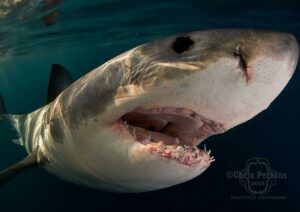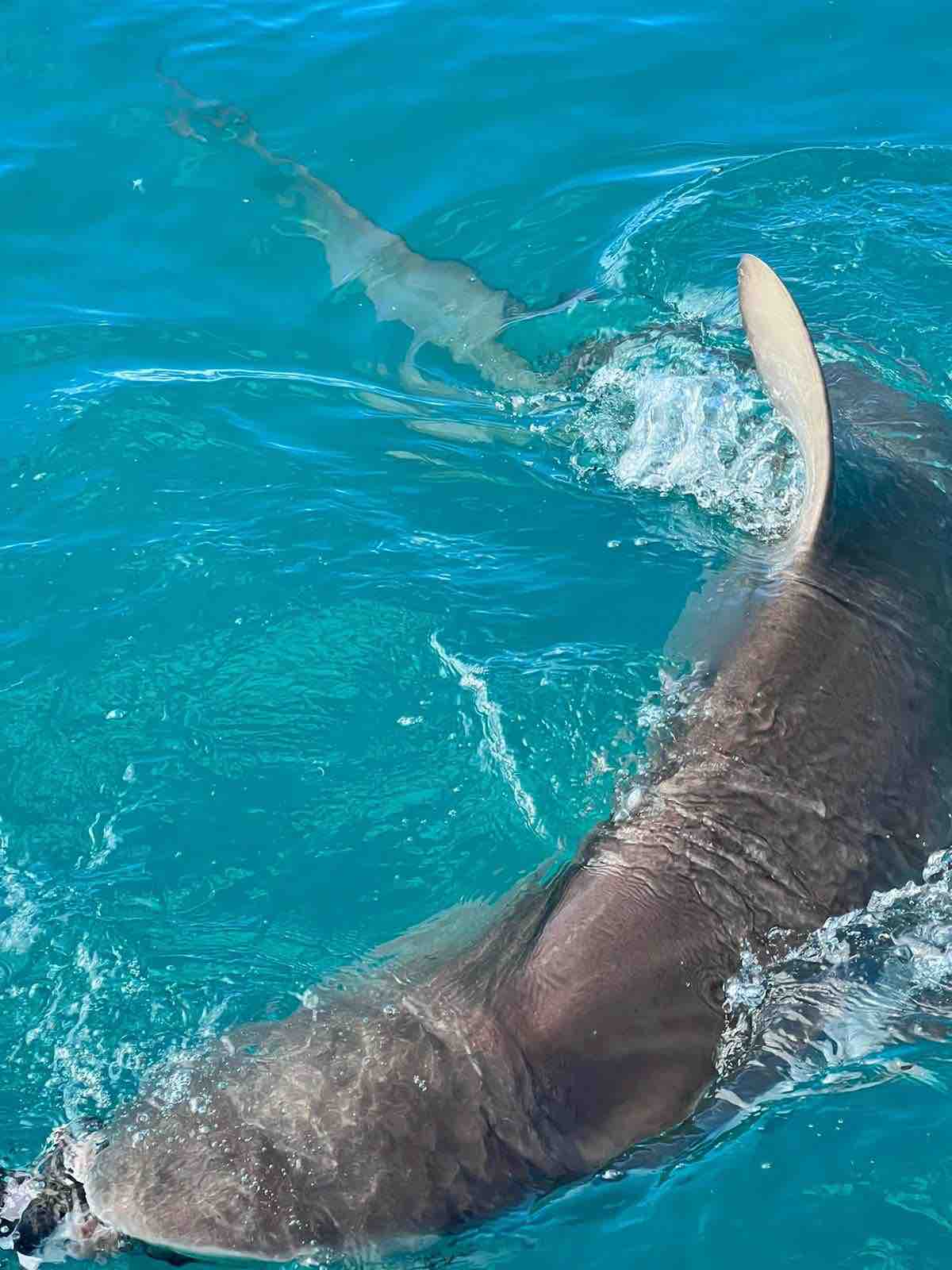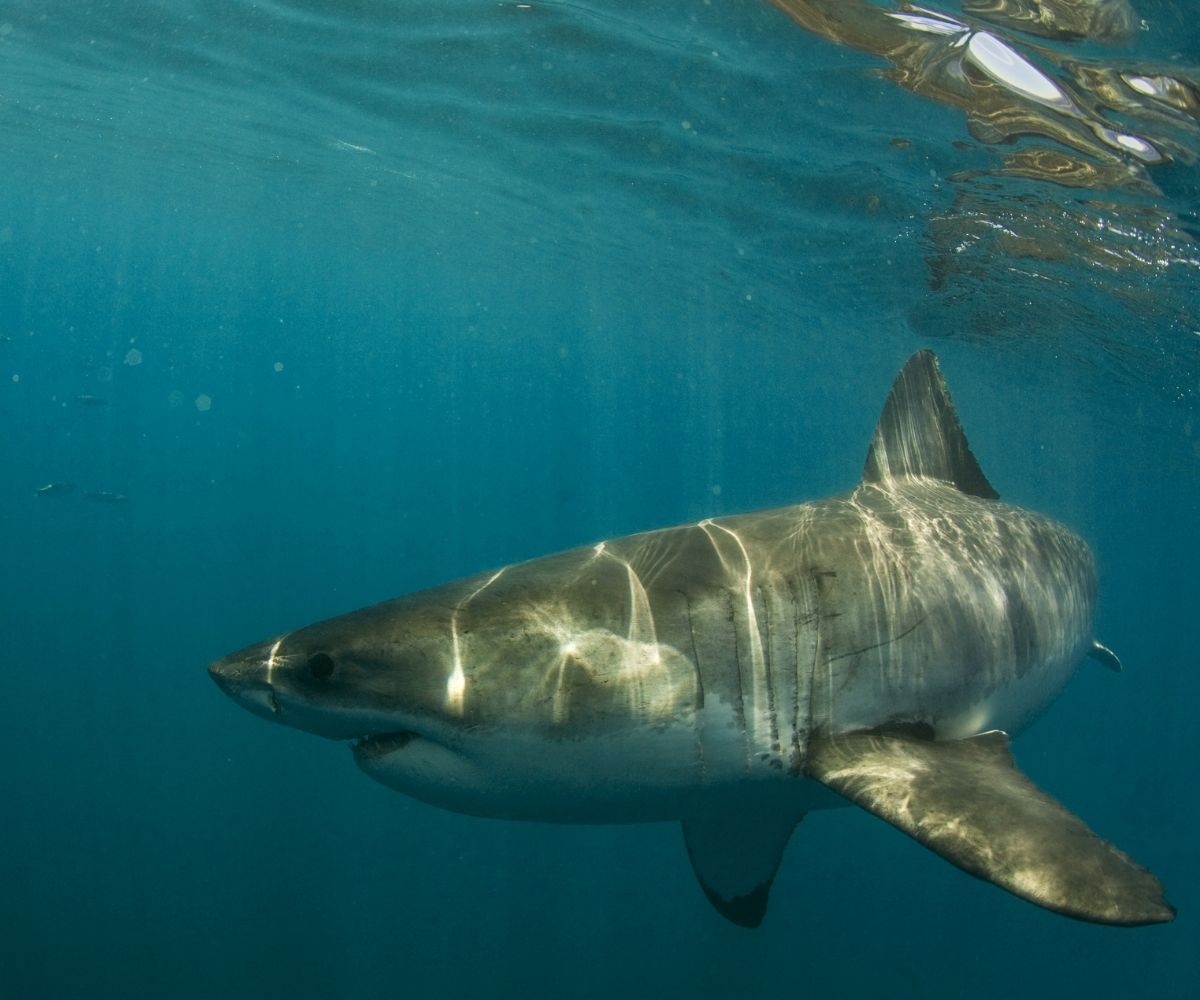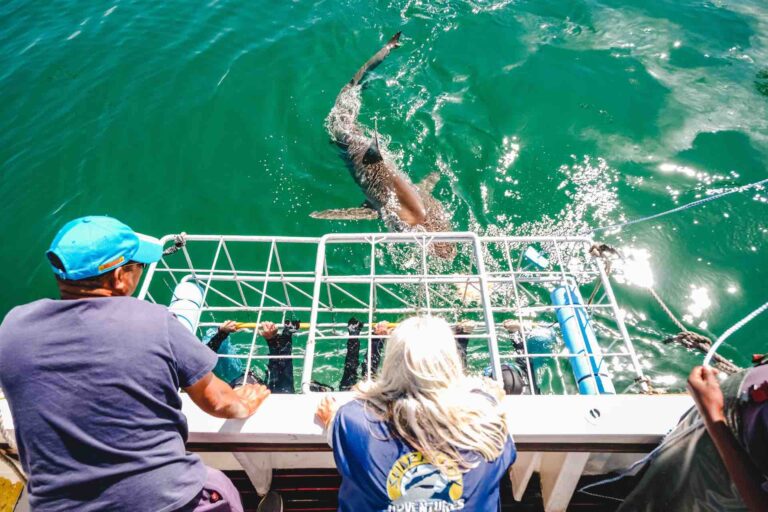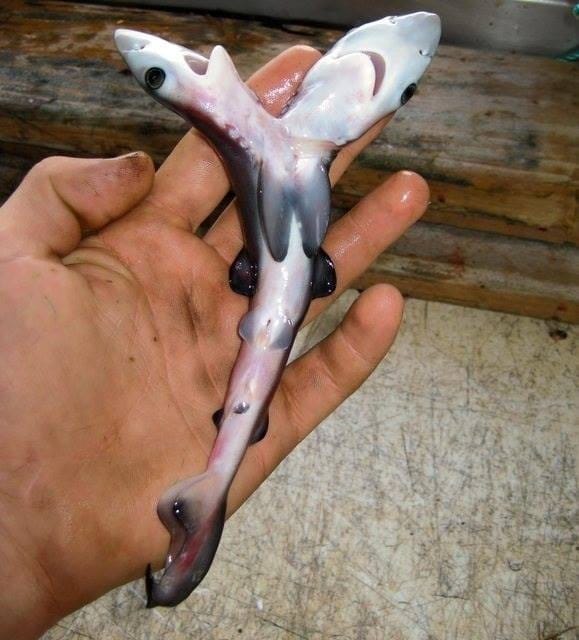5 Differences between Great White- and Bronze Whaler Sharks
Let’s see how they differ, and in which ways they perhaps are similar…
The Great White shark (Carcharodon carcharias) and the Bronze Whaler shark (Carcharhinus brachyurus) are two distinct species of sharks with several differences:
1. Appearance: Great White sharks are larger and bulkier, reaching an average length of 15-20 feet and weighing up to 5,000 pounds. They have a distinct white belly and a grayish upper body. Bronze Whaler sharks, on the other hand, are smaller, averaging around 8-10 feet in length and weighing up to 600 pounds. They have a bronze or grayish-brown coloration.
2. Habitat: Great White sharks are found in coastal and offshore waters of temperate and subtropical regions worldwide. They are known for their preference for cooler waters. Bronze Whaler sharks, on the other hand, are primarily found in warmer coastal waters, including the Indian and Pacific Oceans.
3. Diet: Great White sharks are apex predators and feed on a variety of marine animals, including seals, sea lions, fish, and even other sharks. They are known for their powerful bite and ability to take down large prey. Bronze Whaler sharks, on the other hand, have a more varied diet that includes fish, squid, rays, and smaller sharks.
4. Behavior: Great White sharks are known for their predatory behavior and are often associated with attacks on humans, although such incidents are relatively rare. They are known for their ability to breach the water surface while hunting. Bronze Whaler sharks, on the other hand, are generally not considered a threat to humans and are known for their schooling behavior, often found in groups.
5. Conservation status: Great White sharks are listed as vulnerable by the International Union for Conservation of Nature (IUCN) due to overfishing, habitat degradation, and accidental capture in fishing gear. Bronze Whaler sharks, on the other hand, are listed as near threatened, primarily due to overfishing and habitat loss.
It is important to note that both species play important roles in their respective ecosystems and contribute to the overall balance of marine life.
